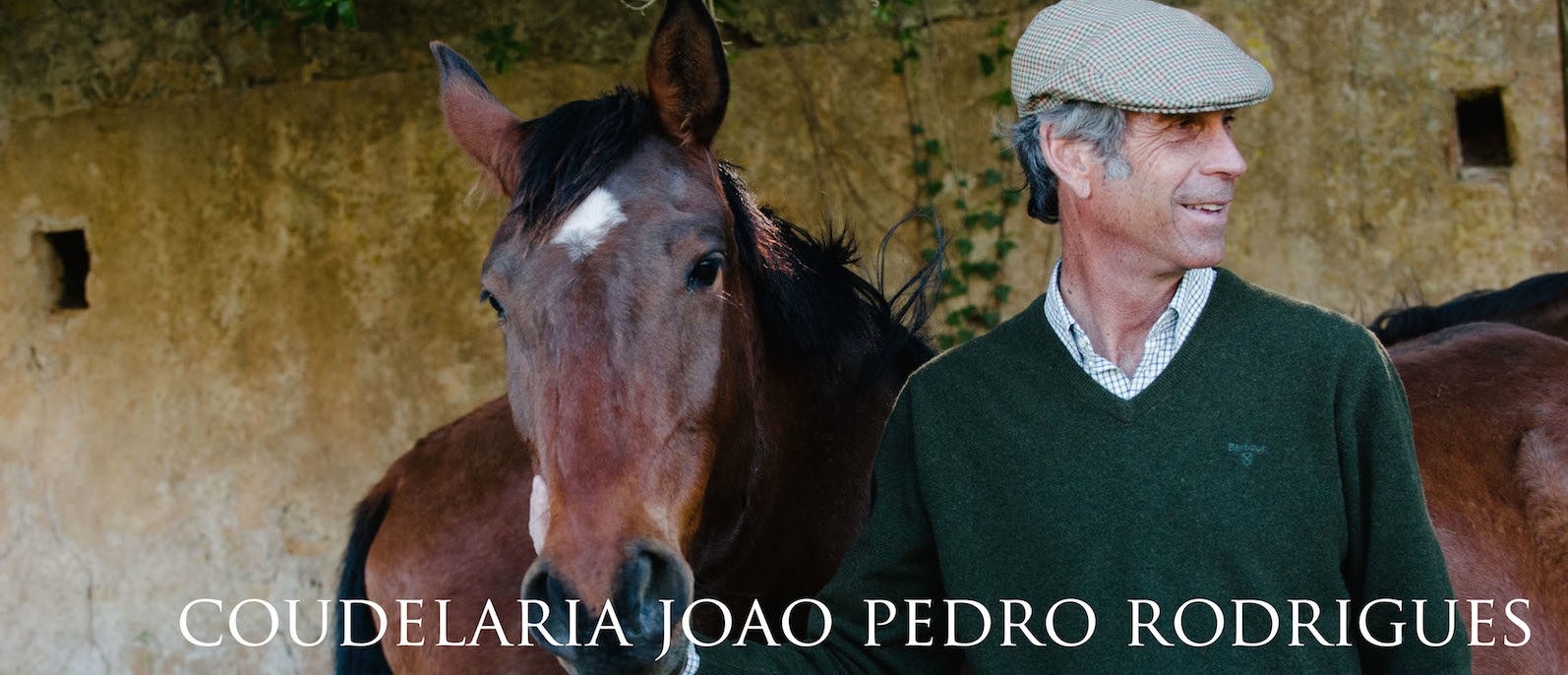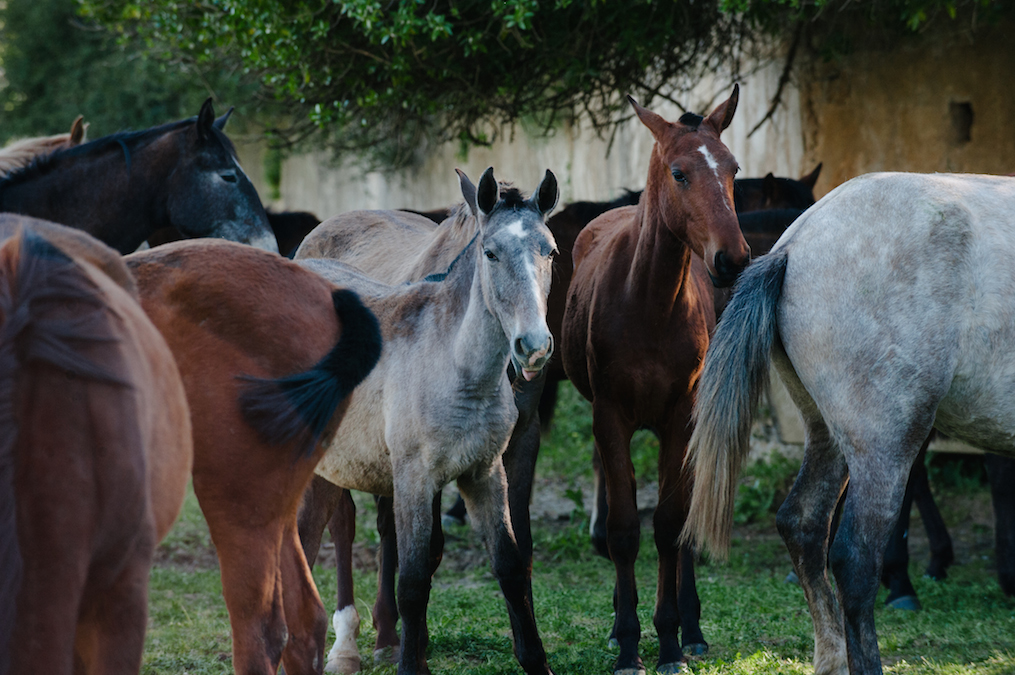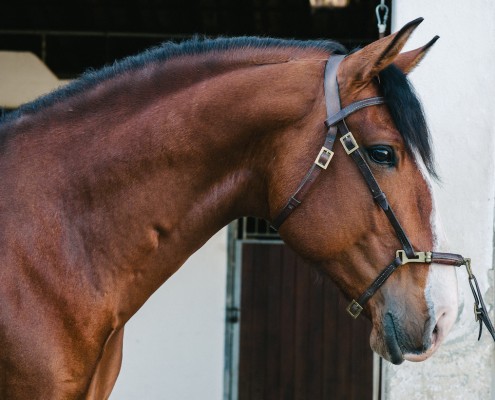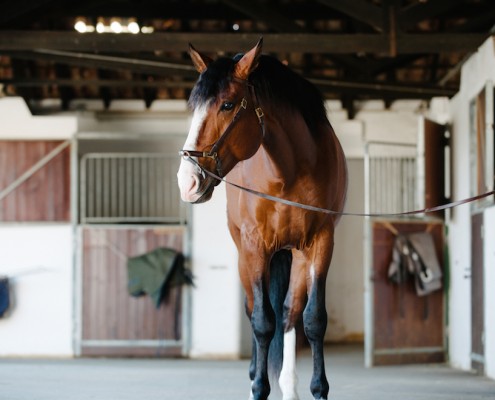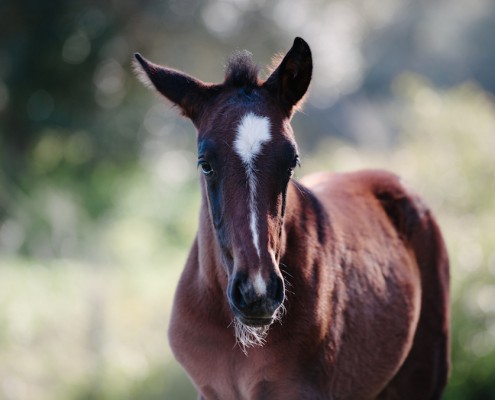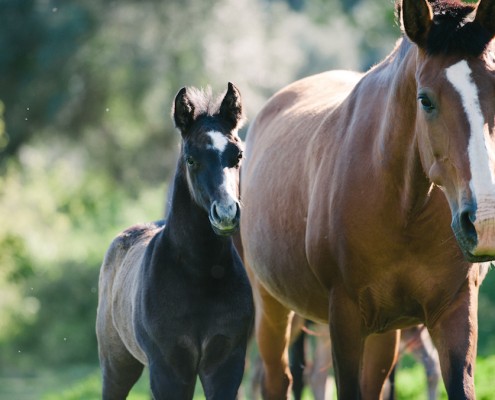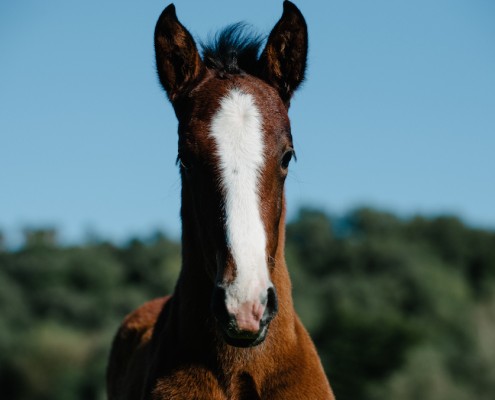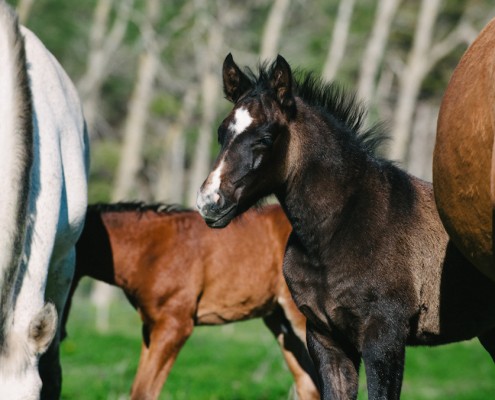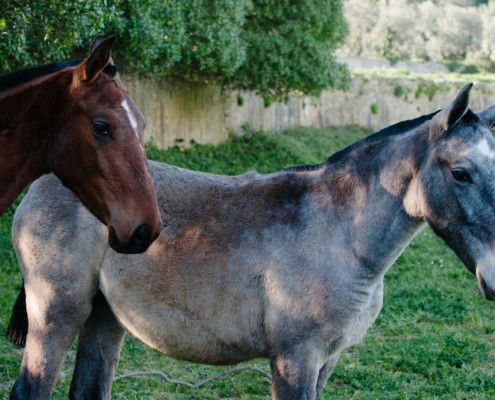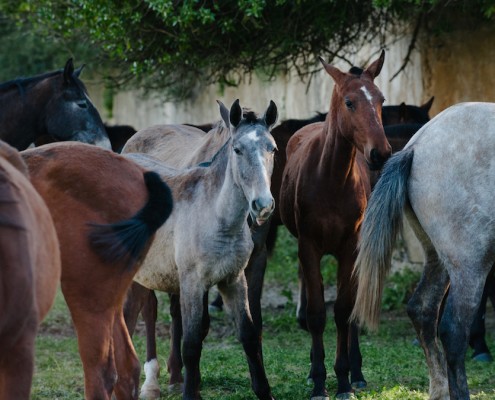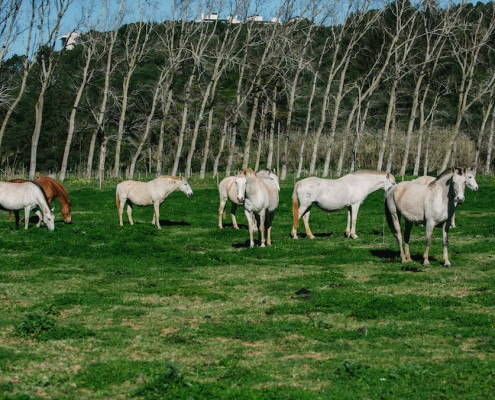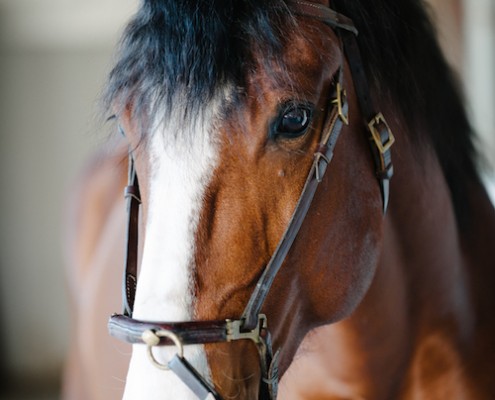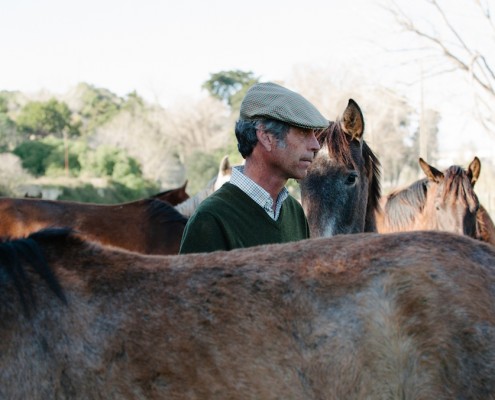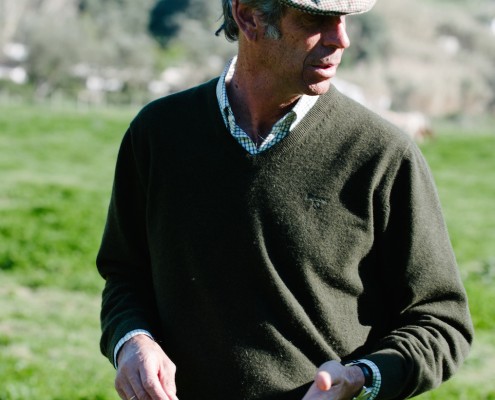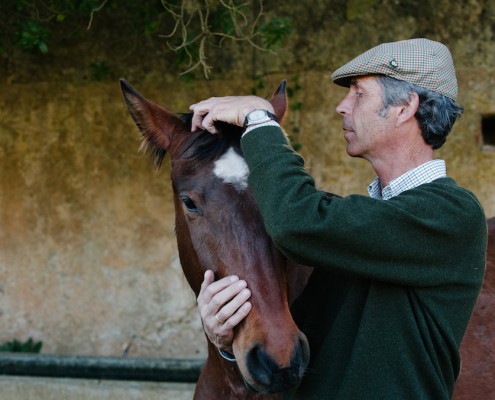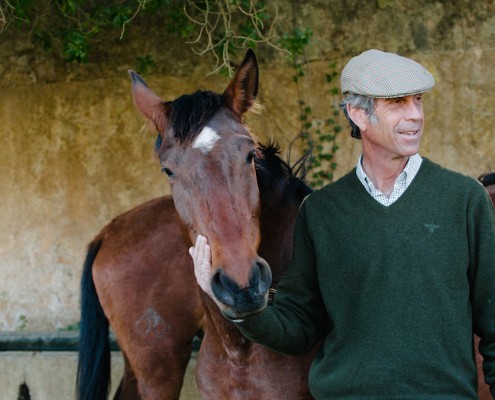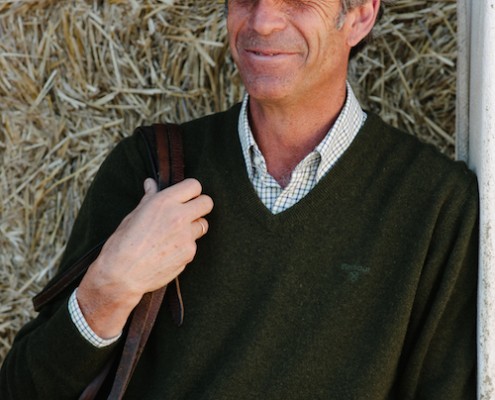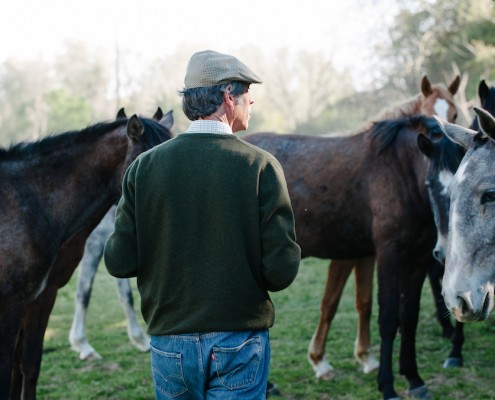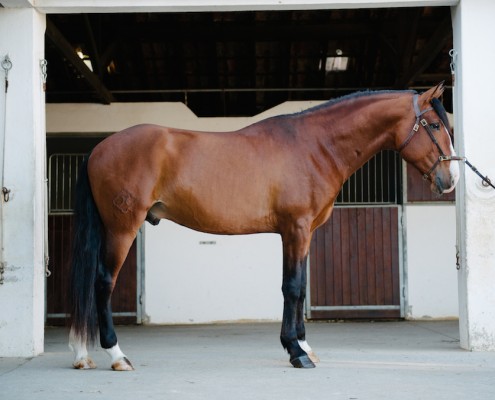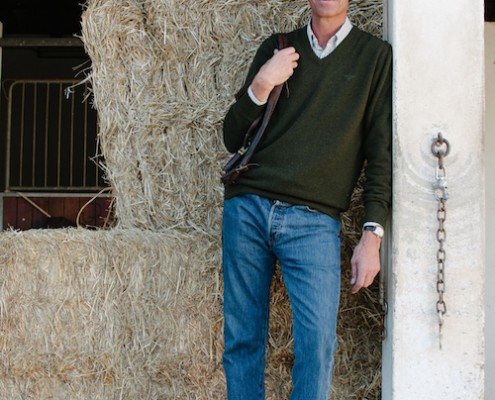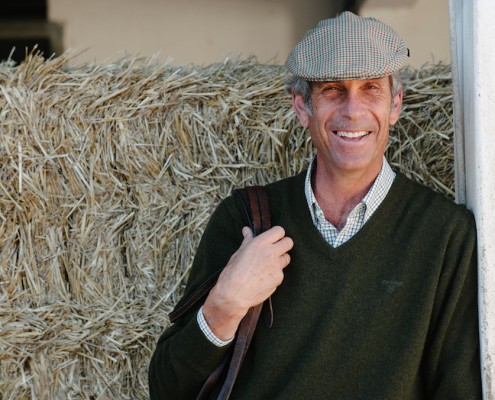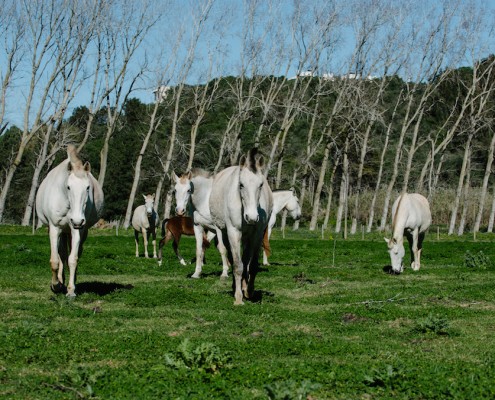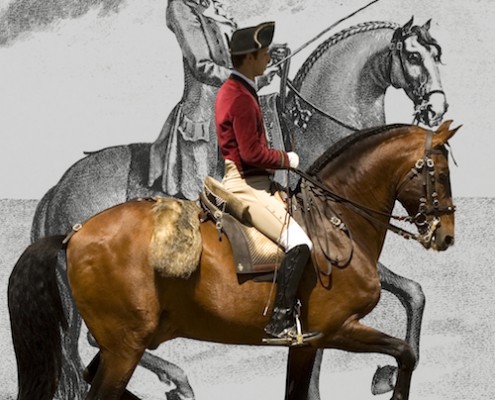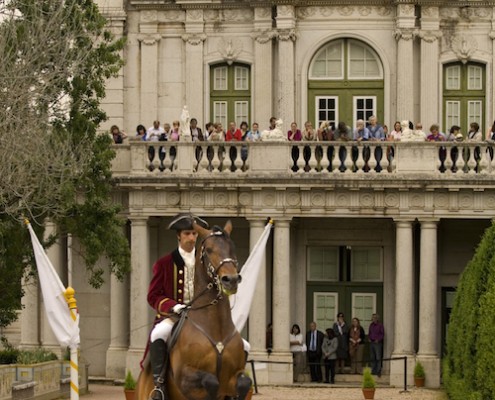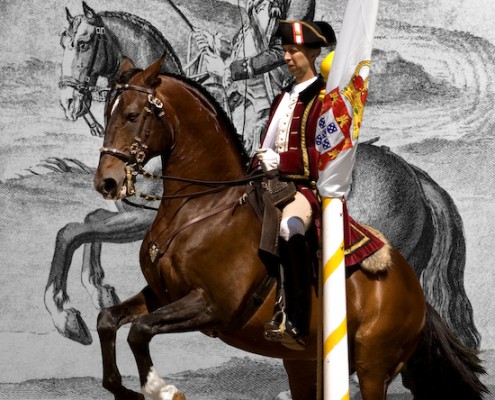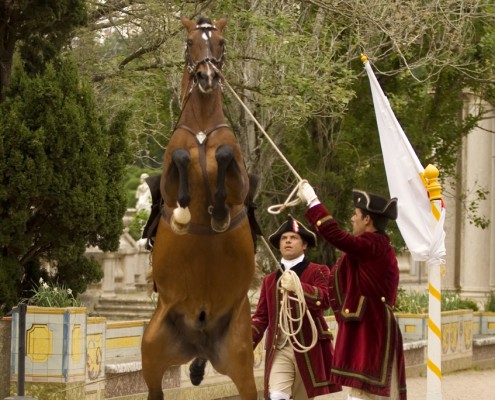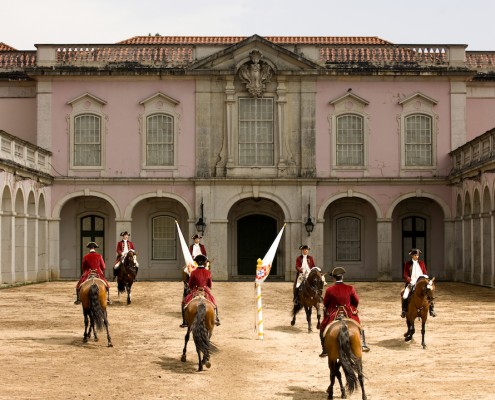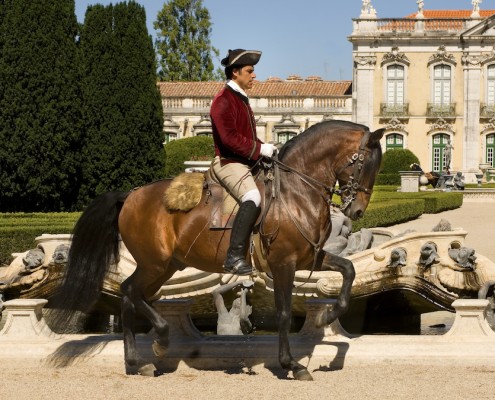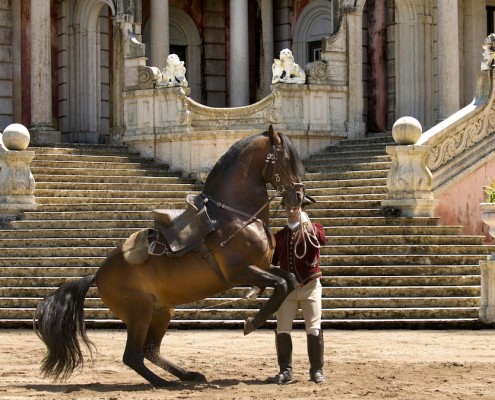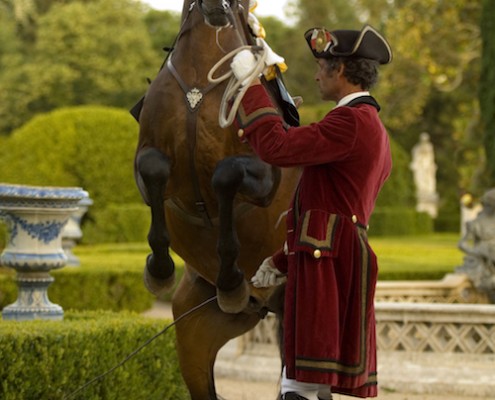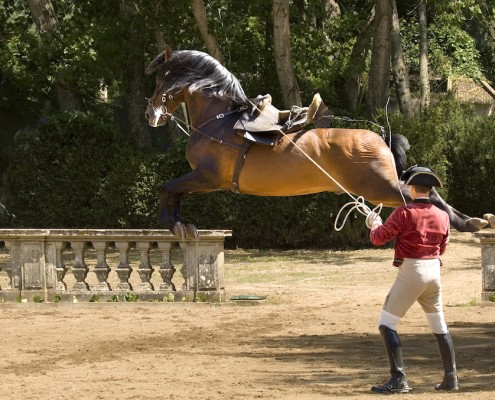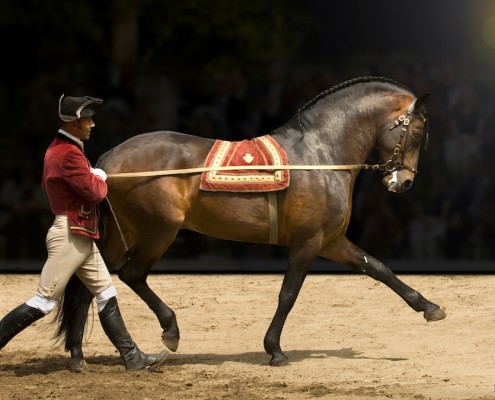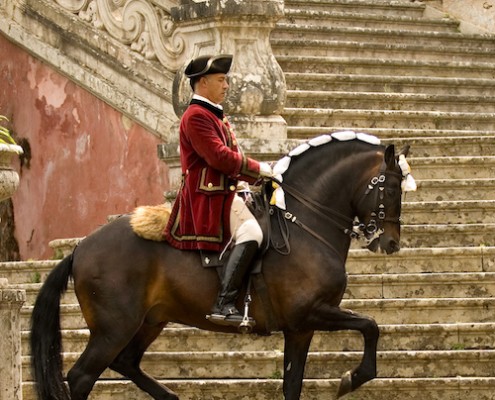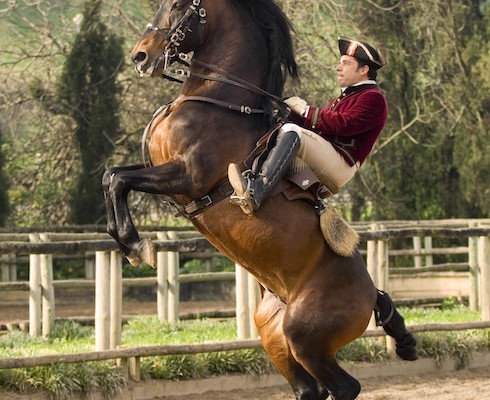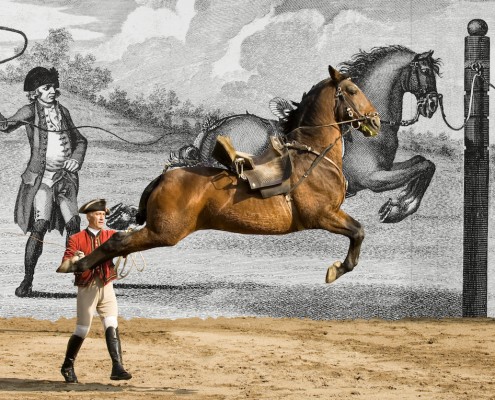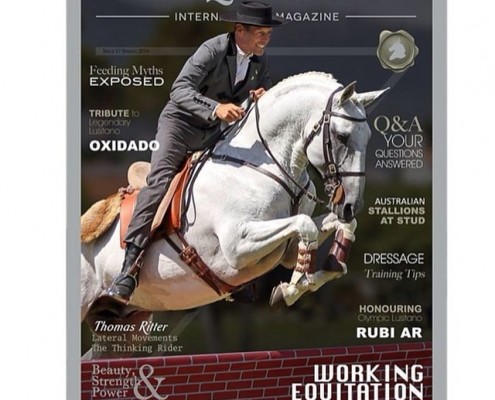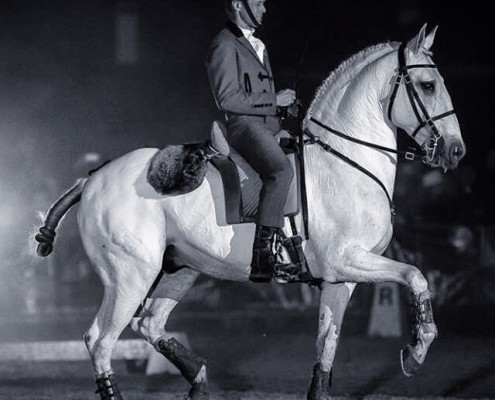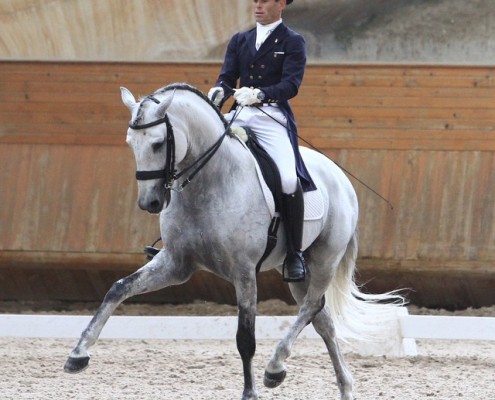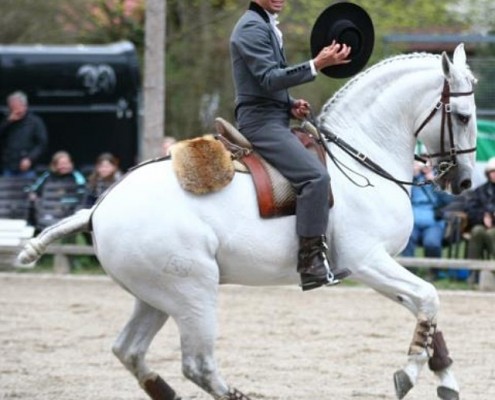Joao Pedro Rodrigues – Head of the Portuguese School of Equestrian Arte
I just love to pass time with people that lift my spirits even higher! João Pedro is a man that does this every time. He exudes positive energy from his finger tips to his toes, his smile radiates sunshine and he moves at such energetic rate if you don’t keep your eye on him he has disappeared onto the next task.
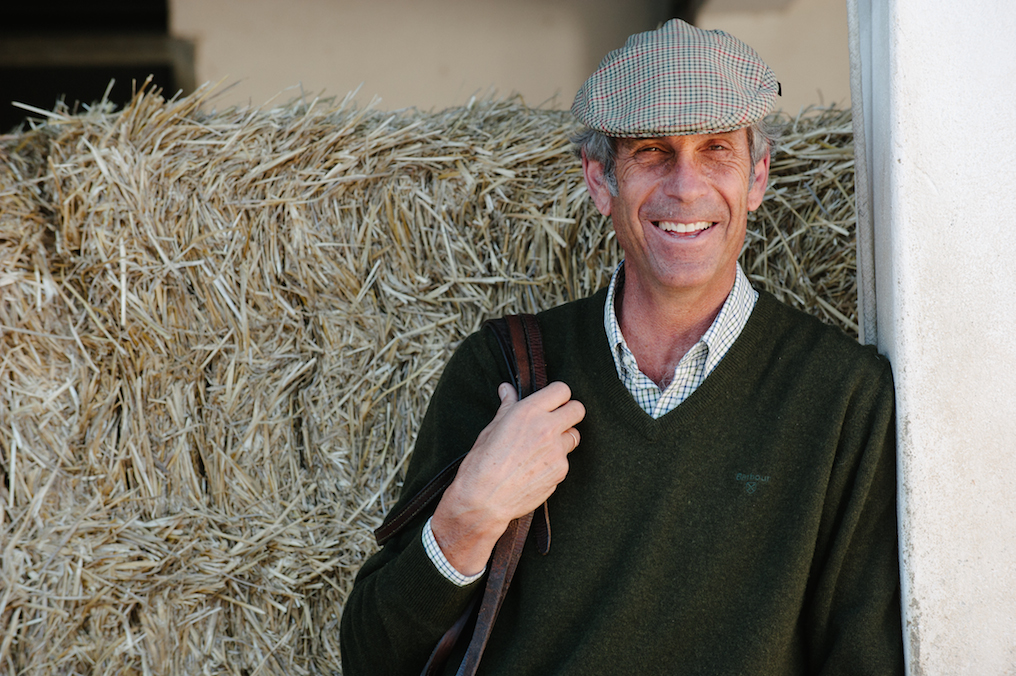
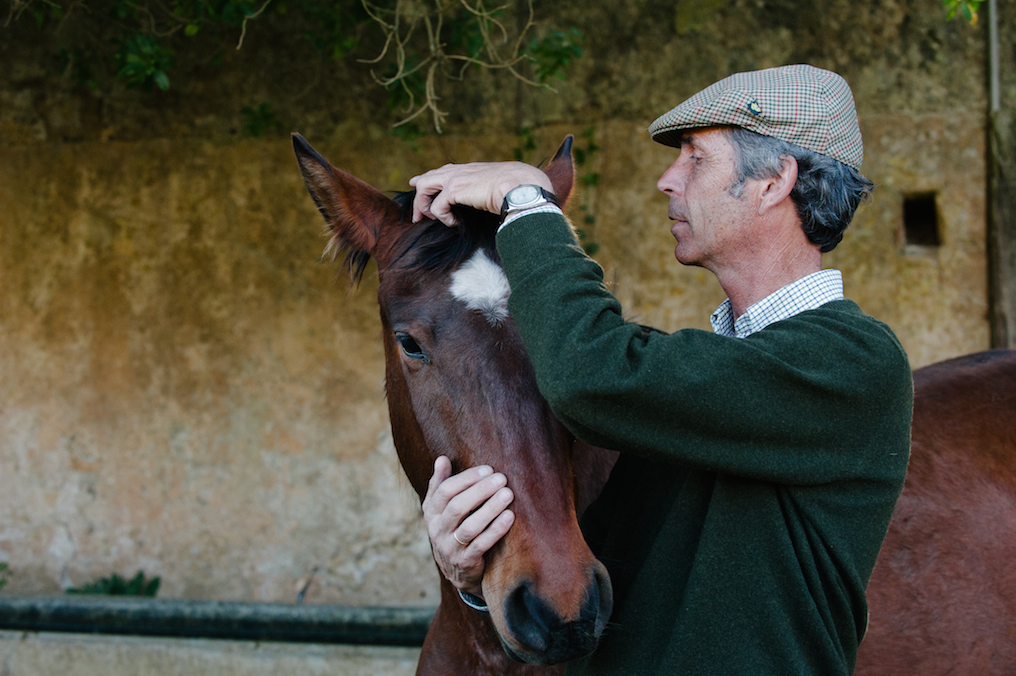 He is also a committed man and has been with the Portuguese School of Equestrian Arte for 35 years. The school was re established in 1979 by 4 riders. After just one year one rider left and João Pedro was invited to be the forth member. They started with their own personal horses. Now João is the head of the school and has seen it grow and change into the famous establishment it is today. I find him to be extremely knowledgeable in the school’s history right back to time of the Royal Courts and how they preserved the court, the horses and the Arte by moving everything to Brazil to avoid it being taken by Napoleon.
He is also a committed man and has been with the Portuguese School of Equestrian Arte for 35 years. The school was re established in 1979 by 4 riders. After just one year one rider left and João Pedro was invited to be the forth member. They started with their own personal horses. Now João is the head of the school and has seen it grow and change into the famous establishment it is today. I find him to be extremely knowledgeable in the school’s history right back to time of the Royal Courts and how they preserved the court, the horses and the Arte by moving everything to Brazil to avoid it being taken by Napoleon.
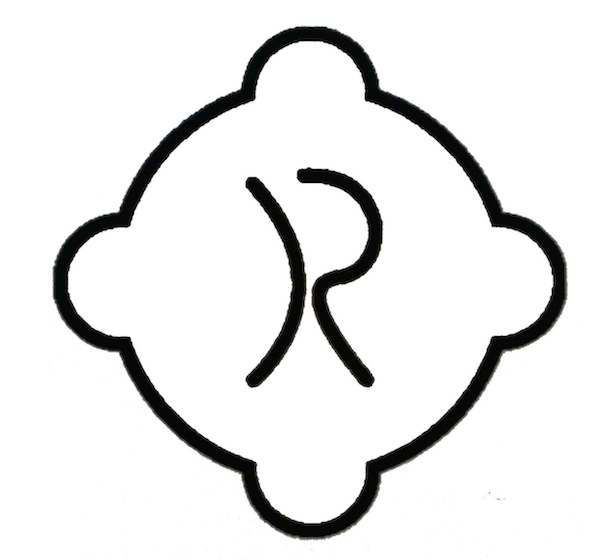 My first meeting with João for this interview, was at his stud to see his own breed Lusitanos. Although João is at the School 6 mornings a week, the afternoons are devoted to his stud. He also has some private students he is training, João has impressively taught over 40,000 dressage lessons so far!
My first meeting with João for this interview, was at his stud to see his own breed Lusitanos. Although João is at the School 6 mornings a week, the afternoons are devoted to his stud. He also has some private students he is training, João has impressively taught over 40,000 dressage lessons so far!
His Lusitano Stud was founded 20 years ago and is located close to Lisbon. Today many of his horses are achieving top results in high level competition in dressage and working equitation.
Lena and I arrived in the late afternoon, it’ was hot, the lowering sun forming long shadows across the ground giving a sultry feeling… but as we walk into the yard there’s a buzz in the air! João, tall, lean and long legged is striding across the yard taking huge steps. He’s busy with his son getting a trailer ready to move one of his 3 year old colts to his training yard in Cascais. We are greeted warmly and are immediately ushered towards the ‘off road’ vehicle to visit the mares, foals and young stock. João, driving, talks all the way about his horses, classical dressage and the riding school, He’s clearly passionate about every aspect of his life.
The mares are contently grazing with foals along side. I ask João a bit about how he chose his foundation mares. He told me for him it was a matter of – functionality, they must be robust, have good gaits, balance and finesse. They must be of good temperament for training in dressage, classical dressage and working equitation. Most certainly his mares are fine horses, friendly and strong. They gather round us checking my camera bag and pockets. The foals are super big, healthy and already exhibiting good amounts of confidence and inquisitiveness. Most were born in February many sired by Ahoto one of his stud stallions.
João uses several of his own stallions in his breeding programme.
The fading light is wonderful so we linger a little longer while Lena takes a few more images, then back over the gate and off to the colts and fillies a little further along a rough track.
Like the mares the fillies were immediately all around us as soon as we entered the field. The colts were more wary observing us from an acceptable distance. I always find this the social aspect in nature fascinating – the females in a tight group confident and hugely interested in visitors they gather round as tightly as possible occasionally the lead mare chasing off one or two but on the whole they all want their chance to search a pocket or bag, nibble your hair and generally take in everything. The male counterparts work in their groups in such a different way generally a bit more wary but not always some will come over straight away but often they prefer to keep an agreed gap between until they have decided it is ok the advance. Then they come in ones and twos.
João’s young stock is sportive and athletic in bay or grey.
On the way back to the yard I ask João if he knew Mestre Nuno Oliveira, yes he was friends with him and he immediately relaid a wonderful story about the Mestre.
A tiny glimpse into the life of Mestre Nuno de Oliveira
He told me how one day he went to visit Mestre Nuno Oliveira. On arriving in the village, all was shrouded in thick fog, he could hardly see a thing. The foggy stillness was broken by an atmospheric sound of Opera booming right across the village and way down the valley.
He followed the haunting music to the farm. Parking his car he walked up the hill to the picardeiro, where he beheld a truly romantic vision.
A beautiful woman stood in the centre dressed in traditional Portuguese winter riding costume. In a canter pirouettte around her was the Mestre on a white Lusitano stallion. The scene filled with drama, atmosphere and romance, the fog, opera and beauty of the moment has remained fixed in my mind said João. He smiled to himself.
Back in the yard we see a 3 year old starting his work on the lunge. there are currently 5 young horses in work in his yard. They are started slowly, with care and understanding.
I ask João which horse of his own breeding he is favourite and most proud of –
João – I don’t have just one favourite! I have three! Oxidado who has won so many competitions and prizes with Pedro Torres. Then I adore Rouxinol as a breeding stallion and also because he was born on my birthday. Lastly Ahoto because of his fantastic power and versatility!
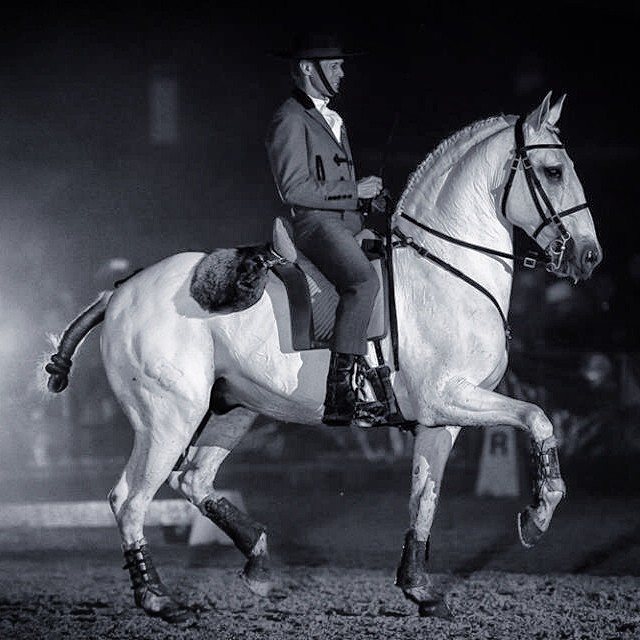
 Oxidado has won more prices that any other horse in working equitation. He is an Internationally known horse that received a tribute at the Lusitano Breed Festival at Cascais and in Golega in 2014. It was a really spectacular display and emotional for many people. Now at 20 years old, after a long competition career he is still a ‘lion’
Oxidado has won more prices that any other horse in working equitation. He is an Internationally known horse that received a tribute at the Lusitano Breed Festival at Cascais and in Golega in 2014. It was a really spectacular display and emotional for many people. Now at 20 years old, after a long competition career he is still a ‘lion’
Image 1 -Black/white image of Pedro Torres on Oxidado at Golega by Laurent Vilbert-photographe
Image 2 Oxidado on cover of Baroque Magazine
Image 3 – Ahoto competing Inter 1 with Pedro Torres
I have three horses doing Prix Saint George and Grand Prix in Dressage – 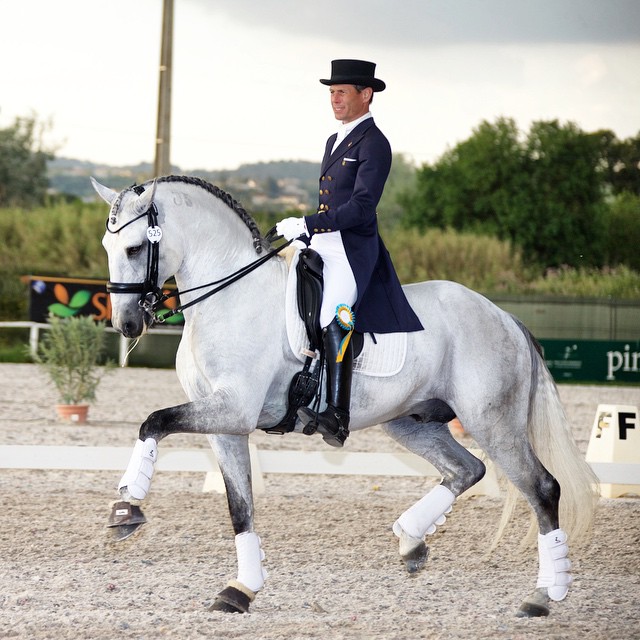 Anil, Vinho and Ahoto.
Anil, Vinho and Ahoto.
One horse called Relento that participated in the World Championship of Young Horses in Verden, Germany.
I have another 9 stallions which have won in International showing classes for conformation and movements, Some with the title – Champion of Champions – Painho, Paxola (two times), Quié, Tóxico, Vip, Uligário, Ahoto, Bariloche’.
How did you link up with Pedro Torres and how long has he been riding your horses?
“I met Pedro in 1996 in Quinta da Marinha. I saw him riding and I felt he had great potential. So I contacted him to work in the Portuguese School of Equestrian Art. Later in 1997 he started to work in my stud with the horses of my own breeding. Now he continues to ride my horses. Although he doesn’t work directly for me we simply have an agreement with some special horses such as Ahoto, Bariloche, Csar and Oxidado”.
João tell me how your days are made up now?
“Nowadays I work four horses in the Portuguese School of Equestrian Art per day and one horse in my own stable….. but there was times that I was working 10/11 horses per day. I also have my duties as the head of the riding school, my stud and private students”.
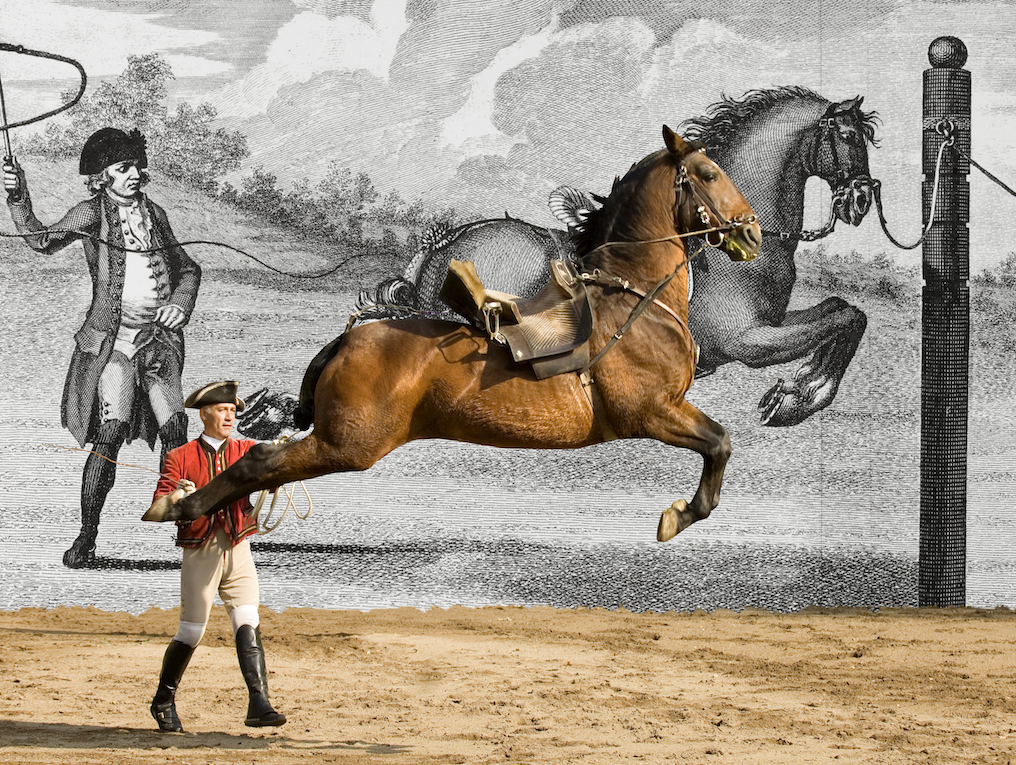
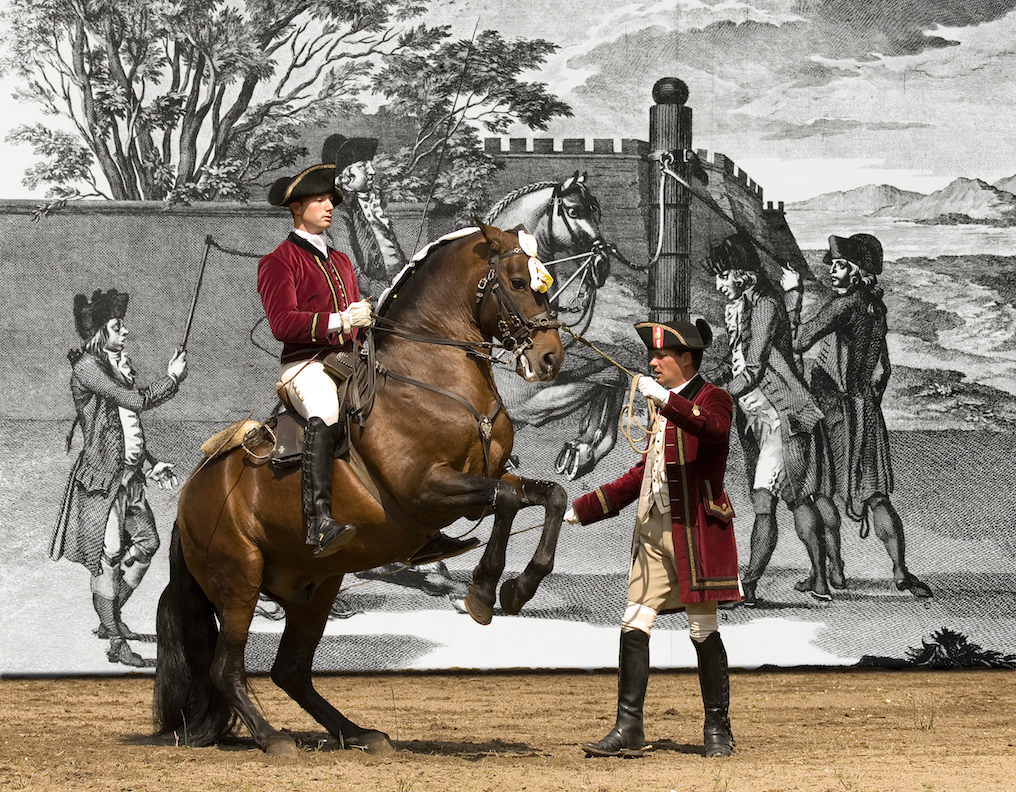 Joao,it is a fact that a good proportion of Portugal’s modern day most successful International competition riders have come from the Portuguese Riding School – Goncalo Cavalho, Miguel Ralao, Daniel and Carlos Pinto, Luis Valenca, Nuno Palma to name a few. Naturally I am curious to know what your opinion is on this. What is the difference in the training of young riders and horses. How are you producing such top riders.
Joao,it is a fact that a good proportion of Portugal’s modern day most successful International competition riders have come from the Portuguese Riding School – Goncalo Cavalho, Miguel Ralao, Daniel and Carlos Pinto, Luis Valenca, Nuno Palma to name a few. Naturally I am curious to know what your opinion is on this. What is the difference in the training of young riders and horses. How are you producing such top riders.
Deliberating for about a minute or so João said “I believe it’s a matter of developing a truly ‘in depth’ knowledge of balance. The riders in our school learn all about the finest details of balance throughout their training. Balance is extremely important when teaching difficult exercises such as Capriole, the Courbette and Levade. In these movements perfect balance is paramount or the exercise cannot be achieved and even in extreme situations a serious injury can occur.
Joao went onto say – “working horses from ground and ridden our riders learn a lot about the details of balance – certainly in my experience nearly every riding problem that occurs is generally resolved by getting correct balance and understanding the finer elements of this.
Most riders never have the opportunity to learn these exercises and most don’t spend much time working their horses from the ground other than in lunge work. So there is a much more limited opportunity to observe and experience balance in the horse. They never see the tiny details in obtaining perfect balance in the horse’s body. Understanding counter balance is also very important”.
TIP – Joao
The iberian horses have a tendency the bend less on the side of the mane. This is because many have big, heavy manes which makes it more difficult for them. Also with such a mane the rider is unable to see fully if the horse is bending equally often the horse is not. Plaiting can help problem so you can see their bend.
João has a huge knowledge of the Portuguese School of Equestrian Arte’s history. I could listen to him for hours. On my second with him at the Riding School in Belem while we walked around the training areas watching the riders work the Alter Stallions in hand and ridden he told us more about the history.
“It was was originally founded for the Royal Court in the 18th century as the Court Riding Academy. Then with the 3 invasions in Portugal the court of Portugal decided when the threat of Napoleon loomed large they would preserved their court and their horses. So they moved the nearly everything including their prime stallions to safety in Brazil. A wise move as when Napoleon invaded he did, indeed take many horses from the academy in Belem.
NB – You will find in Brazil a breed of horse called the Mangalarga Marchador which is a descendant of the Portuguese Lusitano stallions and barb mares. The breed is known for it’s beauty, intelligence, disposition and smooth gaits.
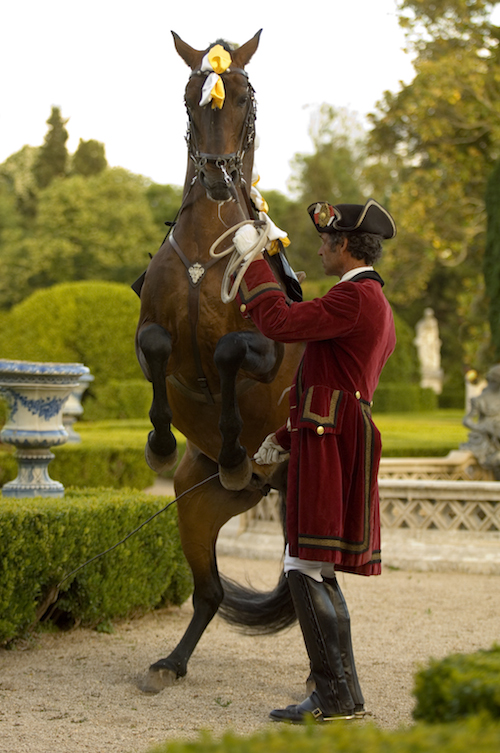 In 1979 the Ministry of Agriculture decided to begin the academy again. It has been going ever since and now the original riding hall has been recovered and will be re-opened in July 2015. Hoping with the revival of the original hall the school will be able to give more regular shows and receive more visitors. Show tickets can be bought in the coach Museum – which in fact is the biggest and best coach collection in the World boasting 150 coaches and worth a visit in it’s own right”.
In 1979 the Ministry of Agriculture decided to begin the academy again. It has been going ever since and now the original riding hall has been recovered and will be re-opened in July 2015. Hoping with the revival of the original hall the school will be able to give more regular shows and receive more visitors. Show tickets can be bought in the coach Museum – which in fact is the biggest and best coach collection in the World boasting 150 coaches and worth a visit in it’s own right”.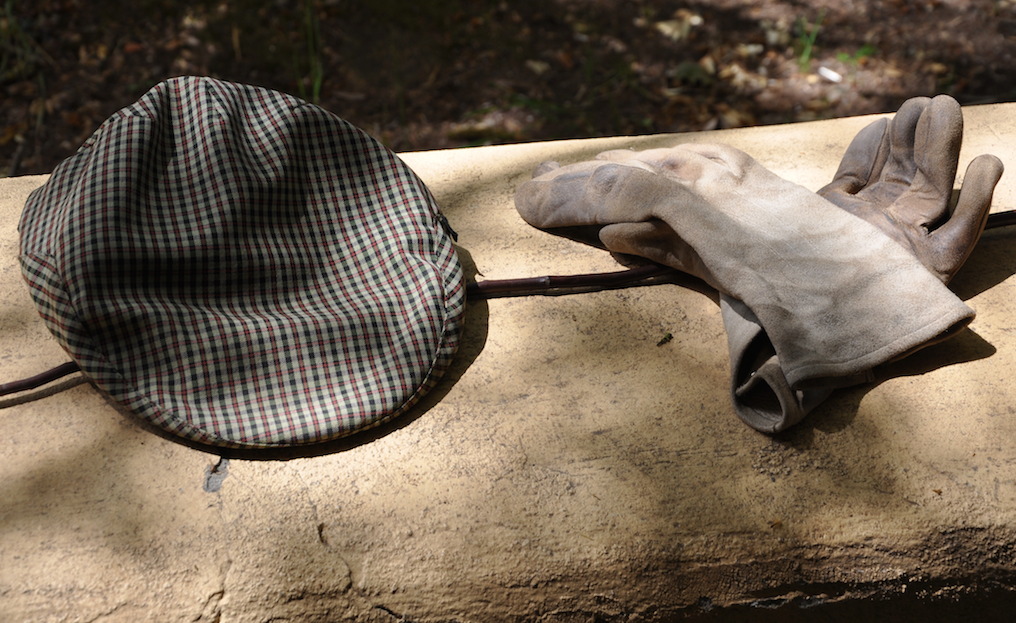
João has been the director and head of the school for a few years he loves his work and is putting together many innovative ideas to give it greater World presence. He showed us around the training and school and we watched the riders working the Alters from the ground and ridden. Joao explained some of the things they were doing. He also rode a beautiful 7 year old Alter Stallion for us which he greatly enjoyed. Unfortunately the School policy does allow photographs taken of the riders when they are training without wearing their traditional costumes. We have, however lots of photographs in the gallery kindly offered to us by school
The school uses Lusitano horses bred at the Alter Real Stud Farm, established in 1748 by King João V to supply the Portuguese Royal Household and its riding school with horses. We will be writing more about these horses in a future article.
Image of João Pedro Rodrigues from EPAE
NB – The beautifully handcrafted saddlery was originally designed and handmade by Victorino’s grandson Jose he is still hand making exquisite saddles and bridles today. Lusitano Horse Finder are very fortunate to be the sole agents for his products. Each piece can be considered a collectors item and once Jose and Cristina are no more this opportunity will disappear too. See the article on Victorino
I asked how young riders come to be in the school –
João “The young riders come to us from all kinds of places working in studs, riding schools etc. Sometimes they apply to us and sometimes we spot talented ones. Either way they begin with us on a 6 month trial period. We’ve also just started accepting young women, in fact we have two on the programme right now. They are doing really well. Women are riding in the other three main schools – France, Austria and Spain so why not in Portugal too.
After the 6 months we have an interview with the student and the decision is made whether they stay and continue their training or not really depends on both parties.We currently have 11 riders”.

As we arrive at Joao’s office we were curious to know about future plans for the school.
I am very happy with the way the school is progressing especially with the re opening of the original riding hall although it is not so big it is right in Lisbon so we will have weekly shows so more people will come. Also we are introducing some exciting new aspects within the performances – displays of some of the 18th century court games. He showed us images of the games in old book of classical equitation. They are super fun and will add some real spice to the performances I think can’t wait to get started.
There is no doubt that João is an amazing man who is making a positive difference in the equestrian world. His enthusiasm and energy is inspiring and he is a real pleasure to spend time with.
Thank you João so much for the time you have given us, I look forward to future encounters and learning more.
Image by Teresa Burton In João’s office with João Pedro Rodrigues, Terese Burton and Therese Alhaug Equilife World Magazine
Interview and editorial by Teresa Burton Lusitano Horse Finder Images (unless otherwise stated) by Lena Saugen Photography
Copyright – All rights reserved
FURTHER INFORMATION
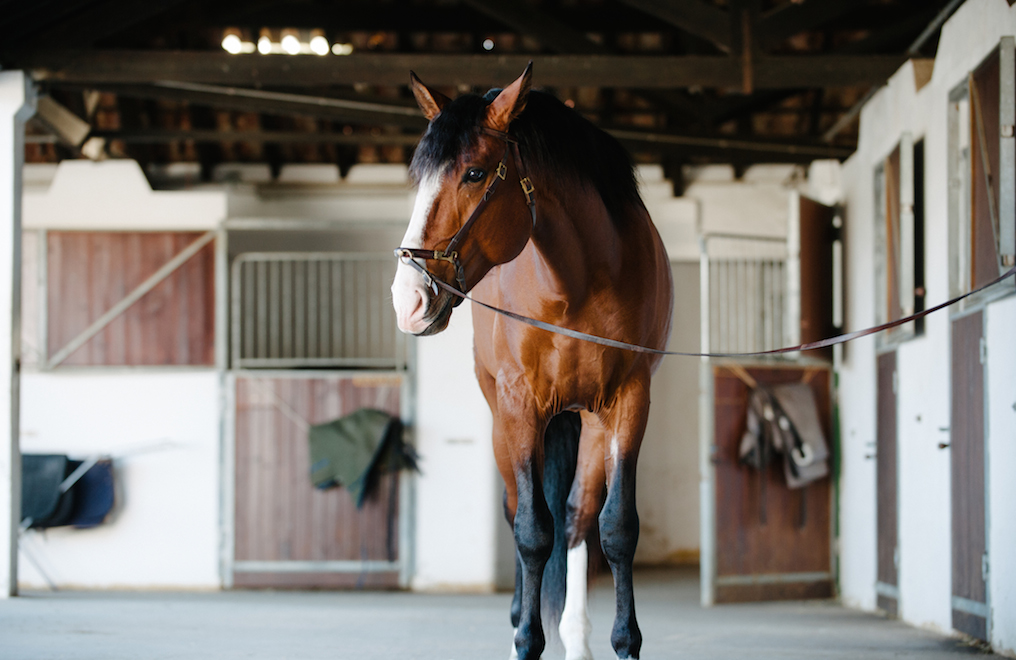
Beautiful 4 year colt for Sale pure bred by Ahoto at JPR image Lena Saugen Photography
If you would like to see and try the horses of João Pedro Rodrigues please get in touch Teresa
Contacts
Website: The official website of EPAE
Telefone: +351 219 237 300
E-mail: info@parquesdesintra.pt

